On the eve of the 68th Cannes Film Festival, Variety dedicates the new issue to the festival, featuring a long interview with Cate Blanchett, and a wonderful photoshoot by Steven Chee. Check the gallery!
Gallery Links:
It’s not surprising that “Carol” was locked away in Hollywood’s development closet for 15 years. Based on Patricia Highsmith’s scandalous 1952 novel “The Price of Salt,” Todd Haynes’ latest movie is a double whammy by industry standards: it’s headlined by two women, who fall in love with each other.
The film, which stars Cate Blanchett and Rooney Mara, and premieres at the Cannes Film Festival on May 17, arrives at a pivotal, yet paradoxical, time for female-driven stories. There has been a string of hits this year that celebrate female empowerment — from “Insurgent” and “Fifty Shades of Grey” to “Cinderella,” and the upcoming “Trainwreck,” “Spy” and the final installment of “The Hunger Games.” That said, gender inequality both in front of and behind the camera is a hot-button issue in the global entertainment business.
As one of cinema’s most prominent stars, Blanchett, whose recent roles include the evil stepmother in “Cinderella,” doesn’t want Hollywood to wait for Prince Charming to save the day. “We have to push forward,” says the 45-year-old Australian actress, who believes successful women are finally starting to nurture projects for females. “What industry has parity pay for women? None. Why would we expect this industry to be any different?” She says the dominance of male stories on the bigscreen is bad business. “It’s not serving the audience,” she explains. “People want to see good films. We should have equal access to the multiplexes.”
On a recent afternoon in Manhattan, lounging outside the Crosby Street Hotel with her hair in a ponytail and a shawl draped over her shoulders, Blanchett says she wasn’t convinced that “Carol” would ever make it to theaters. “It was so hard,” she recalls. “Midrange films with women at the center are tricky to finance. There are a lot of people laboring under the misapprehension that people don’t want to see them, which isn’t true.” And while the franchise-obsessed movie industry covets young male audiences above all else, it can no longer ignore female moviegoers — who account for at least half of ticket sales each year.
Blanchett believes there is some hope. “I think there’s been a critical mass of women who have reached a certain place in the industry,” she says, citing Meryl Streep, Reese Witherspoon and Nicole Kidman, as well as producer Allison Shearmur, who made the Disney fairy tale about a magical glass slipper a reality. “I want it to not be discussed anymore,” Blanchett notes. “But it needs to be discussed.”
Blanchett was delighted when she received a call in 2013 from her old pal Haynes (“I’m Not There”), telling her he wanted to make “Carol,” after a series of directors had dropped out. The drama centers on a charismatic New Yorker (Blanchett) who embarks on a passionate love affair with a younger department store clerk, Therese (Mara).
The indie production, which was financed by Film4 and Goldcrest Films, and was filmed in a Cincinnati outfitted to look like 1950s New York, wrapped in only 35 days in April 2014. “We shot in these old homes that felt like tombs,” Blanchett says. “The atmosphere of the city really added to the atmosphere of the film.” But after various cuts were shown to test audiences, the movie (scheduled for a late 2015 release from the Weinstein Co.) went into hibernation.
If “Carol” works, it could earn Blanchett a seventh Oscar nomination (she’s already won two Academy Awards, for 2004’s “The Aviator” and 2013’s “Blue Jasmine”). But if it stumbles, it may be perceived as yet another example of the curse of the gay love story.
When Highsmith first published “The Price of Salt,” she used a pseudonym to protect herself from public outcry. These are very different times, but Hollywood still hasn’t caught up. “Brokeback Mountain” debuted 10 years ago, and there have been few breakthrough gay romances since. Even the past summer’s enthusiastically reviewed “Love Is Strange,” starring Alfred Molina and John Lithgow as a couple, eked out only $2.3 million at the domestic box office.
Haynes, who directed Dennis Quaid’s closeted husband character in “Far From Heaven,” says the focus on gay stories has shifted more to TV. “In some ways, the event of a gay love story is less surprising every day,” Haynes says. “But I think love stories are hard to pull off, period. They require external forces that keep the lovers apart.” Elizabeth Karlsen, who produced “Carol,” adds: “I hope it’s a film for everyone. And certainly when we’ve screened it, we’ve found young and old, male and female, straight and gay, have all responded.”
Blanchett was a celebrated Australian stage actress before she was cast in Shekhar Kapur’s 1998 drama “Elizabeth.” Kapur recalls interest from a variety of A-list actresses — including Gwyneth Paltrow and Kidman — in playing the virgin queen, but from the moment he saw a clip of Blanchett, he knew she was fated to assume the throne. “Cate Blanchett was destined to break upon the international screen, and I was her conduit,” Kapur says. He recalls how a young Blanchett would beat herself up after takes, saying that she hadn’t quite landed a scene.
That trait evidently still persists some 50 movies later. “There are days when she’s frustrated by her own work,” Haynes says. “We don’t know what she talking about, but she’ll say, ‘I need to take an acting pill today. It’s not working.’?” Blanchett doesn’t like to talk about her how she prepares for a role. “Do I have a process?” she asks. “I don’t know. There are certainly things perhaps that I don’t want to identify.”
Until recently, she ran the Sydney Theatre Company in Australia with her husband, Andrew Upton, and she’d criss-cross between stage and screen roles such as “The Monuments Men,” “The Curious Case of Benjamin Button,” and the “Hobbit” and “Lord of the Rings” trilogies, in which she portrayed the elf Galadriel.
When asked if this is her first turn as a lesbian, Blanchett curls her lips into a smile. “On film — or in real life?” she asks coyly. Pressed for details about whether she’s had past relationships with women, she responds: “Yes. Many times,” but doesn’t elaborate. Like Carol, who never “comes out” as a lesbian, Blanchett doesn’t necessarily rely on labels for sexual orientation. “I never thought about it,” she says of how she envisioned the character. “I don’t think Carol thought about it.” The actress studied the era by picking up banned erotic novels. “I read a lot of girl-on-girl books from the period,” she says.
The other book on Blanchett’s shelf was “The Private Life: Why We Remain in the Dark,” by psychoanalyst Josh Cohen, which she found relevant on many levels. She describes Carol as “unknowable,” but she could just as easily be talking about herself. Unlike many celebrities today, she treasures her privacy.
For example, she says she’ll never join Twitter. “I think I’d end up in rehab,” she jokes. “That stuff is addictive.” She doesn’t Google herself either. She finds out she’s made headlines when she walks her kids to school and the crossing guard tells her, “What they said about you — that was terrible!” Blanchett realizes we live in a society of snoops. “We need to get into people’s private lives now,” she says. “If they are hiding something, they are dishonest.”
She eventually offers some details about how she unlocked her latest character. Blanchett turned to the film’s costume designer, Sandy Powell, for help. “We asked, ‘What is the most erotic part of the body?’” Blanchett says. “We kept saying that wrists are really erotic. The neck. The ankles. The way Highsmith writes, she’s got this exquisite observation of detail that most people would miss, but a lover’s eye never would. We talked a lot about erogenous zones.”
One of the most memorable scenes in the novel takes place in a hotel room, when the women consummate their love for the first time. The scene appears in the film too, though it isn’t overtly racy. “It’s not ‘Blue Is the Warmest Color,’?” Blanchett says. “That’s not the ambition of the film.”
Screenwriter Phyllis Nagy had always been a Highsmith fan. As a researcher at the New York Times Magazine in the late ’80s, she finally met her literary idol when Highsmith was commissioned to write a walking tour of Brooklyn’s Green-Wood Cemetery, and Nagy tagged along. The two struck up a friendship through letters and occasional visits — Highsmith would write to her from Switzerland, where she spent her final years. She even suggested Nagy make one of her books into a movie, a daunting proposition, because Highsmith loathed all adaptations of her work, including the 1951 Hitchcock classic “Strangers on a Train.” (She died in 1995, four years before the release of “The Talented Mr. Ripley,” in which Blanchett co-stars and first discovered Highsmith.)
Around 2000, a producer from Film4 had acquired the rights to “Carol,” and asked Nagy to work on an adaptation. The writer had a distinct take. “To me, Carol was very much like Grace Kelly in ‘Rear Window,’?” she says. “There’s a sexuality beneath the cool.” She cranked out a first draft in 10 weeks, and spent the next decade working on roughly 10 revisions. “People came and went,” Nagy says. “Various directors were attached and unattached,” including Kenneth Branagh and John Maybury.
The rights eventually lapsed, and returned to the Highsmith estate. That’s when producer Karlsen at Number 9 Films decided to chase after them. The pursuit took her all the way to Zurich, where she had to arrange for an in-person meeting with publishing house Diogenes to make her case that she’d actually get the movie finished. “It’s not a coincidence that I’m a female producer,” Karlsen says. “I have three daughters, and that puts me in tune with the paucity of great female roles. It’s almost by osmosis that you’re drawn to them.”
The “Carol” team underwent one more round of musical chairs before the cameras rolled. Blanchett was always interested in starring, and director John Crowley (“Brooklyn”) boarded the project, and tried to lure Mara to play Therese, but she had just completed “The Girl With the Dragon Tattoo” and passed.
“I didn’t think I could play the part,” Mara says. “So I turned it down, which is insane to me now, because working with Cate has always been a dream.”
Then Crowley had to bail due to scheduling, and producer Christine Vachon suggested Haynes, who was available. “I felt there was something exciting about the festering interiority of a person falling in love,” says the director, who shot the movie in 16mm (the look was inspired by the photography of Vivian Maier).
Haynes and Blanchett were glad to be reunited, and Mia Wasikowska was cast as Therese, but she too had to drop out due to a conflict. Haynes went back to Mara, who agreed to take the part this time. With all the near misses, Nagy believes Haynes was always meant to direct “Carol.” “Happily, we saved the best for last,” she says.
Blanchett is no stranger to Cannes. She first attended the festival in 1997, as an up-and-coming actress who used her connections to land a ticket to the premiere of Ang Lee’s “The Ice Storm.” She returned in 1999, with “An Ideal Husband,” in which she played Lady Gertrude Chiltern. “It was like night and day, walking down the Croisette on star Rupert Everett’s arm,” Blanchett recalls. “I was laughing so hard, because only two years earlier, I’d been on the other side of the barricades.”
Other trips to the festival would follow, for films including 2006’s “Babel.” But it was 2008’s out-of-competition screening for “Indiana Jones and the Kingdom of the Crystal Skull,” in which she plays a villainous Soviet agent opposite Harrison Ford, that drew the biggest crowds. “I’d never seen so many people,” she marvels. “It was like Harrison was the pope.” Last year, she returned with “How to Train Your Dragon 2,” for which she voiced Valka, Hiccup’s mom.
Though she is considered one of the greatest modern screen actresses, Blanchett doesn’t like to watch herself in movies. “I never think I have it,” she says. “Maybe that’s why I keep working.” She’ll often calm herself by imagining that nobody will ever see the movie she’s making, but that didn’t work when she boarded “The Aviator” as Katharine Hepburn, given the high profiles of director Martin Scorsese and co-star Leonardo DiCaprio. She had a ball on set, but when she saw the finished film, she wasn’t satisfied with her performance. “I was filled with disappointment and regret,” admits the actress, who has starred in plays such as “A Streetcar Named Desire,” “Hedda Gabler” and Chekhov’s “Uncle Vanya.” “That’s what I love about theater — you can try to improve what happened the night before.”
The Blanchett-Uptons are planning to move soon from Sydney to either New York or San Francisco. But first, she is in Manhattan for a quick visit before Cannes to reshoot a scene for “Truth,” about Dan Rather’s last days at CBS, in which she stars with Robert Redford. She’s also completed back-to-back Terrence Malick projects, filming for four days on “Knight of Cups,” and then two weeks on “Weightless,” a film for which she had to pseudo-improvise. “Terry would write reams and reams of poetry, and he’d give it to you in the morning,” says Blanchett, who told the director she couldn’t memorize all those lines that quickly. So he’d read her the dialogue in an earpiece. “You’d say what you heard or misheard,” Blanchett says.
She hasn’t seen either of those films, but Haynes showed her an early cut of “Carol” last August. “The visuals surprised even me,” Blanchett says. “I somehow was expecting something more familiar.” If Carol lived today, she couldn’t see her marching in a gay pride parade. “Her sexuality isn’t politicized,” Blanchett says. “I think there are a lot of people that exist like that who don’t feel the need to shout things from the rafters.” She says the movie captures the spirit of Highsmith’s prose. “Her stories, her characters, the texture that she writes are so slippery,” Blanchett says. “It was no surprise to me that it was a tricky thing to get made.”
via Variety




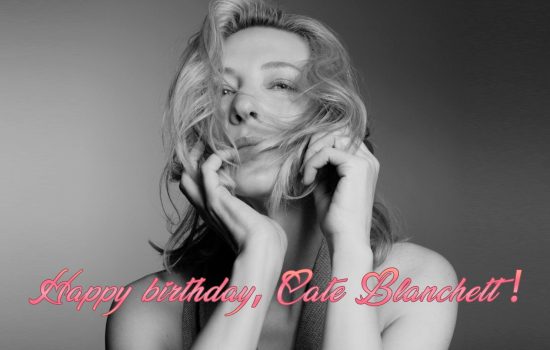
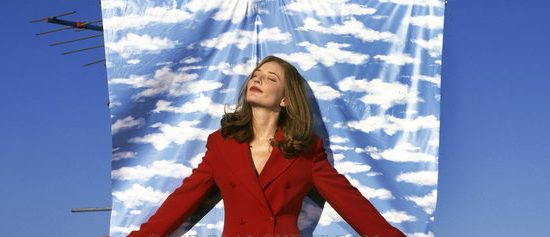

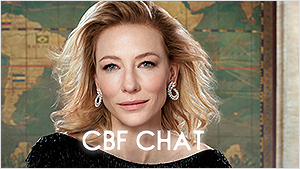
 A Manual for Cleaning Women (202?)
A Manual for Cleaning Women (202?)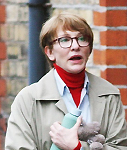 Father Mother Brother Sister (2025)
Father Mother Brother Sister (2025)  Black Bag (2025)
Black Bag (2025)  The Seagull (2025)
The Seagull (2025)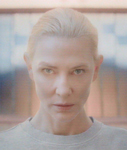 Bozo Over Roses (2025)
Bozo Over Roses (2025)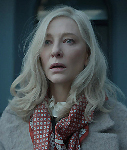 Disclaimer (2024)
Disclaimer (2024) 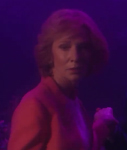 Rumours (2024)
Rumours (2024) 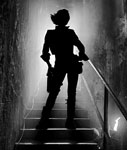 Borderlands (2024)
Borderlands (2024) 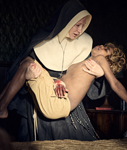 The New Boy (2023)
The New Boy (2023) 











